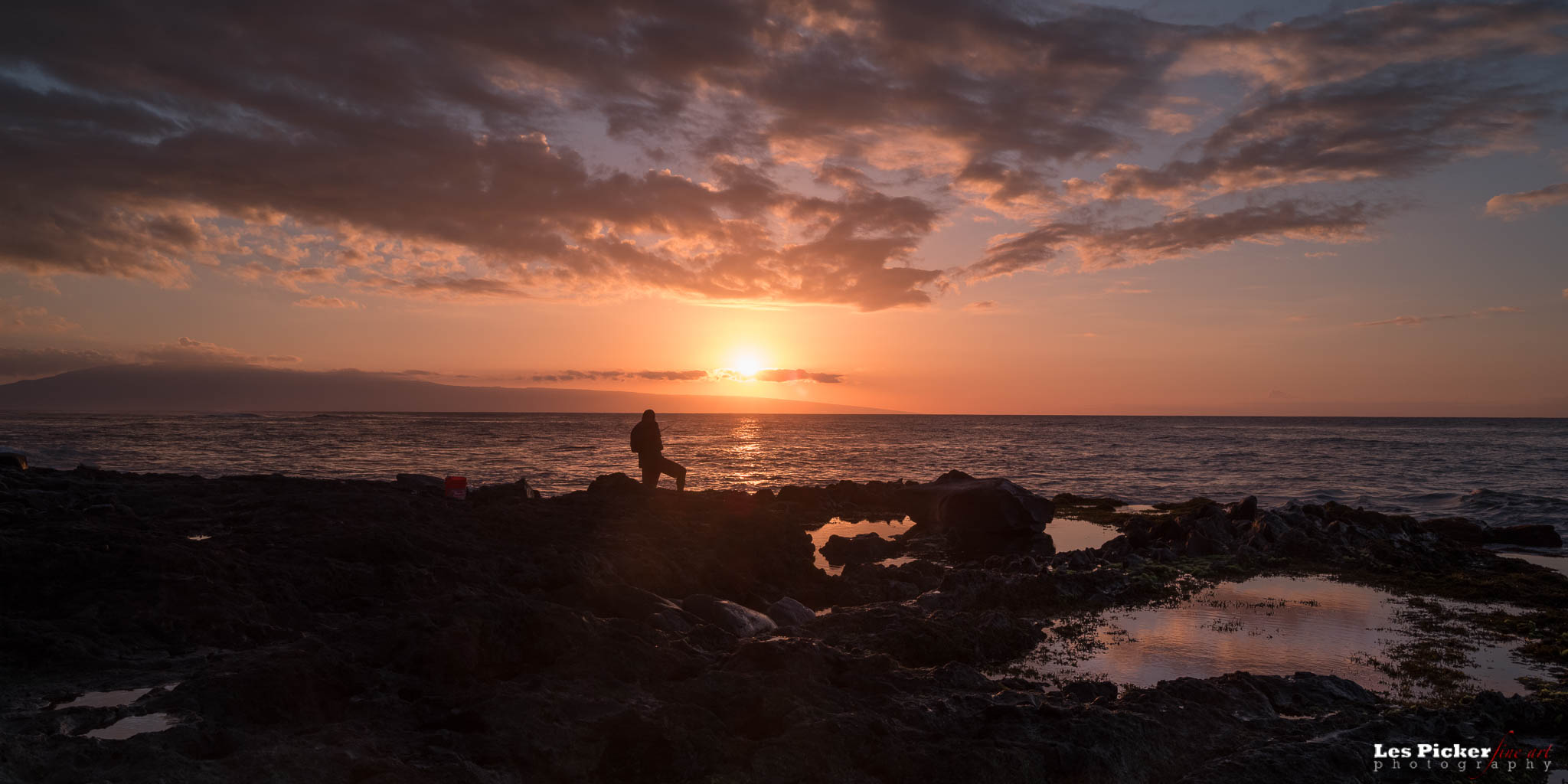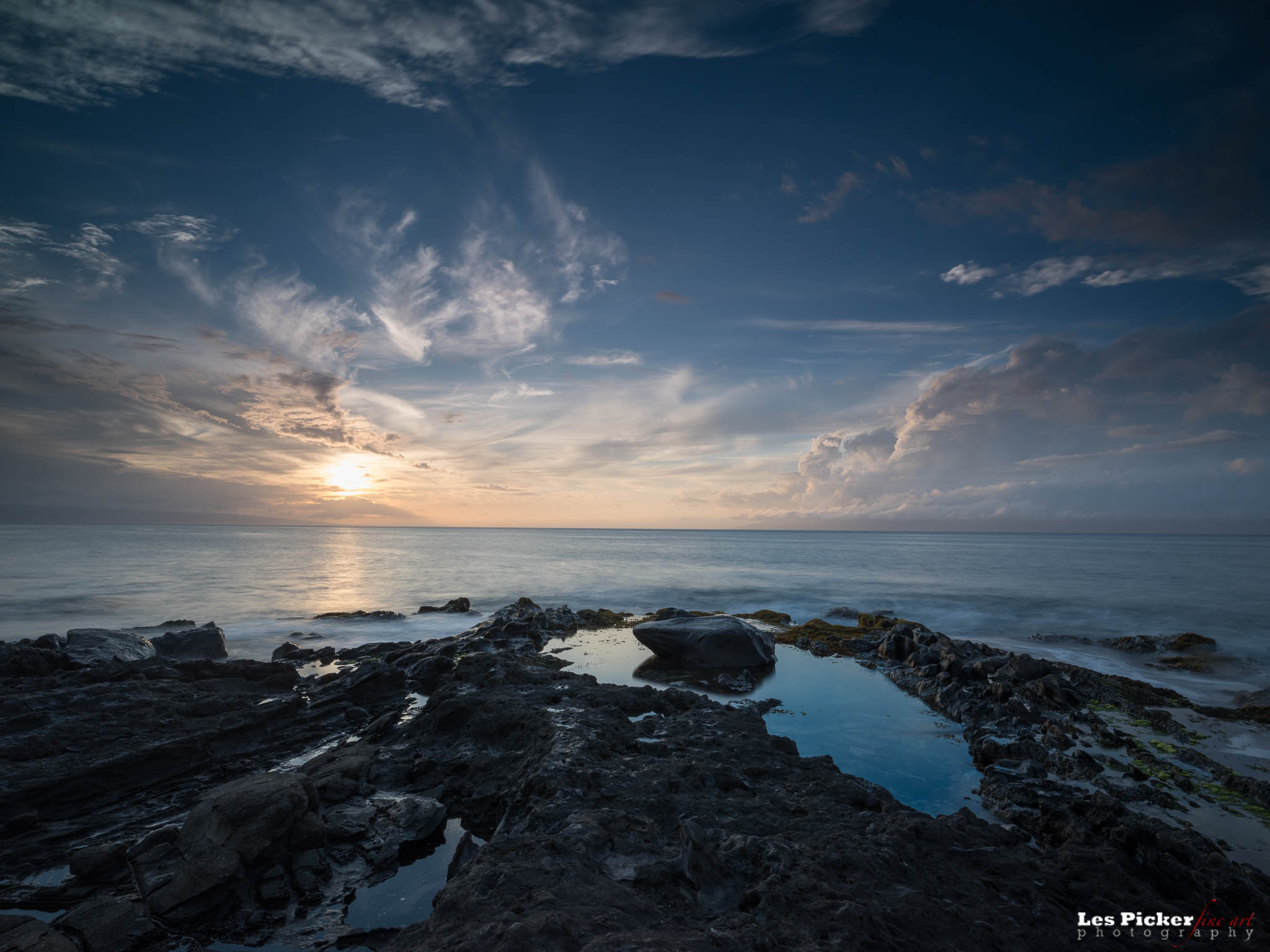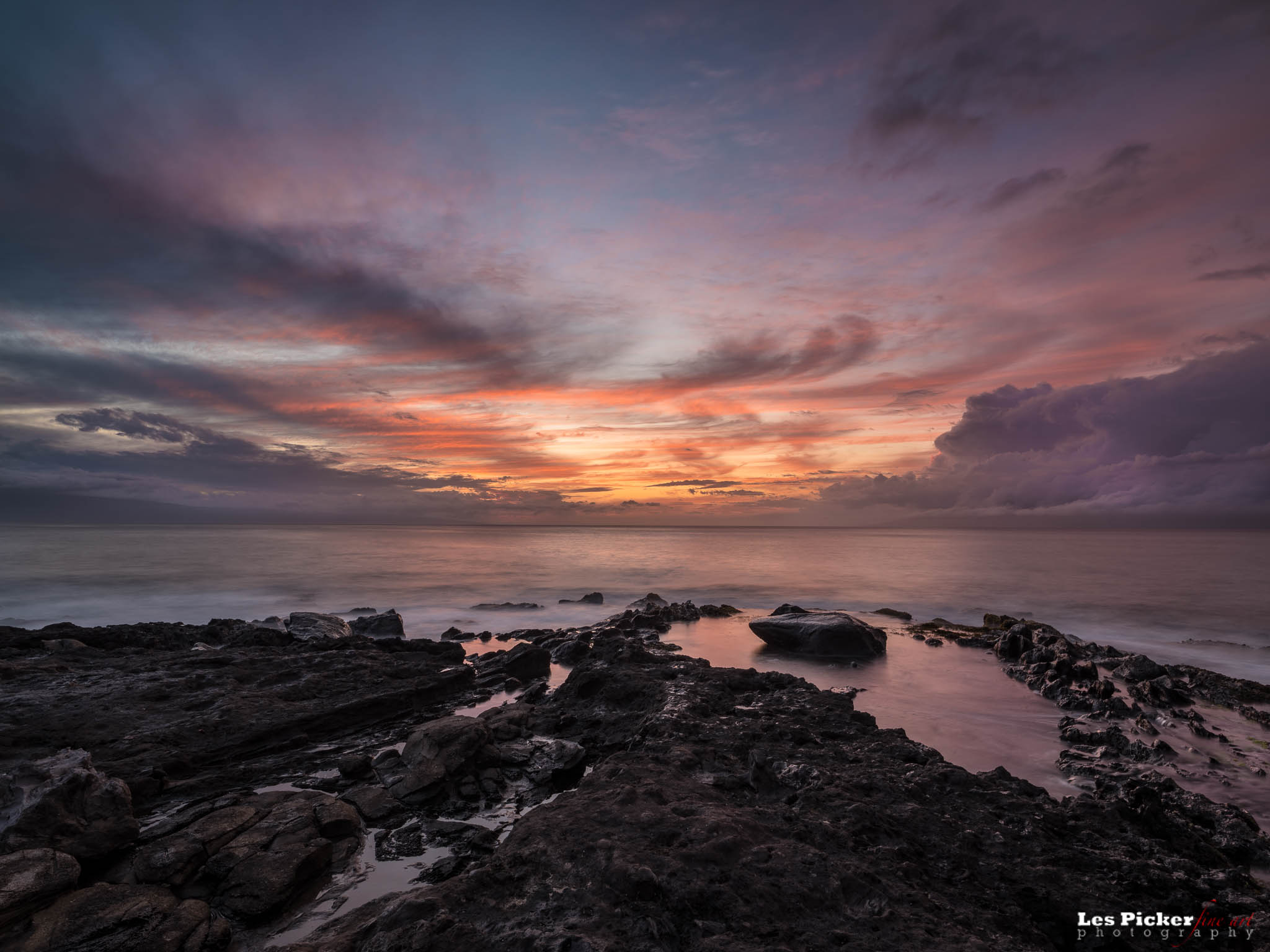
Sunset Joys
I’ve been coming to Maui (and Kauai) for many years now and there is one thing I can say for sure. I will never tire of Hawaii sunsets (and sunrises, too). In storms or great weather, sunsets on the Hawaiian islands are something to behold.
It’s not just the eye candy aspect of sunsets that get me. One of the things I love to do is to hit the same beaches again and again, knowing full well what their photographic strengths and shortcomings are. I love finding new angles, new ways to express the wonders that sunset will reveal.
In the lead image here, for example, I was a bit miffed last week when a local fisherman entered my field of view. My initial thought was he would ruin the shot, but I shot anyway and kind of like his silhouette against the sunset.
Then, just last night, I went back to that same shorefront. It had been lousy weather all day, which often is a good sign that sunset may be good which, in this case, it was.

What I really enjoyed was witnessing the change in colors from the start of sunset, where the blues dominated the scene, to just a few minutes later when the oranges began to flame the sky and offer their sweet reflections to the tide pools.

Now an FYI for those of you who are new to sunset photography or who wish to up your game; here are some specs. All three images were shot on my Fujifilm medium format GFX, with the Fujifilm 23mm lens attached.
Naturally, to ace sunsets you need a tripod. The fisherman shot was unplanned and I knew I had to shoot fast because he was moving about. That is why the ocean water appears in its natural choppy state.
However, I often like to smooth out the water at sunsets, the better to reflect the dreamy mood and to bring the viewer’s eye to the sunset, rather than to dynamic water, with waves crashing (although in some instances crashing waves look great at sunset).
In the “blue” and “orange” sunsets I used a 3 second exposure to tame the water a bit. Most of the time when I shoot at ocean shorelines I will use a shutter speed of 8-15 seconds, depending on wave action. To accomplish that I will use a 5- or 10-stop neutral density filter, although I used no filter in these images. Instead I set my ISO at 50 @ f22, which still allowed me a slow shutter speed.